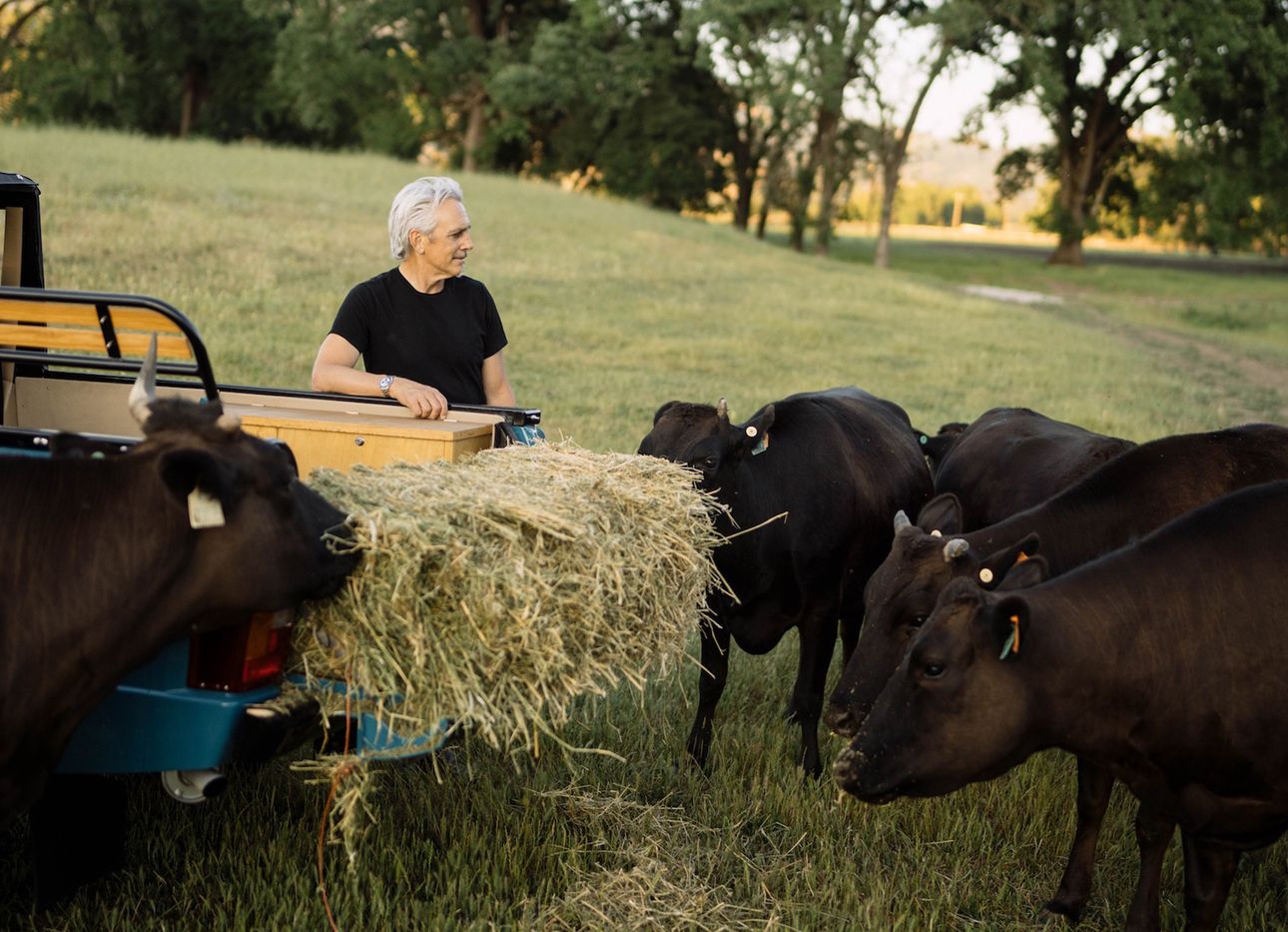
At Knights Valley Wagyu, Respecting Cows and the Environment Go Hand in Hand
American ranches have increasingly been raising Wagyu, a full-flavored beef swirled with thin veins of fat that’s celebrated for its tender, melt-in-your-mouth texture. For Knights Valley Wagyu, a company co-founded by real estate developers Adam Gordon and Will Densberger, raising exemplary cattle goes hand in hand with respecting the land they graze upon. Its cows roam freely in the Knights Valley region of Sonoma County, California, on Ghost Donkey Ranch, a 227-acre property located a short bicycle ride away from the homes and restaurants of three Michelin-starred chefs—Single Thread’s Kyle Connaughton, Harbor House Inn’s Matthew Kammerer, and the Restaurant at Meadowood’s Christopher Kostow—who exclusively use its Wagyu. “We respect the cows’ value as sentient beings,” says Gordon, who bought the ranch about a decade ago while serving on the director’s council at the Scripps Institution of Oceanography, where he was immersed in the principles of deep ecology: the notion that all life, including plants and animals, is sacred and of worth. This perspective continues to influence his work today. Here, we speak with Gordon about his holistic approach to ranching, and the subtle savors that set his Wagyu apart.
What exactly is Wagyu?
Wa means “Japanese” and gyu means “cow.” So, Wagyu describes beef cattle with one hundred percent pure Japanese genetics. Much of the beef served [in the United States] as Wagyu has been cross-bred with American cows. Pure Wagyu, of the highest A5 grade, is a rich, highly marbled beef with a distinctively delicious taste.
What elements contribute to the meat’s singular flavor, and how is it traditionally achieved?
There are three primary factors affecting the taste of Wagyu: genetics, diet, and stress. In Japan, most Wagyu are raised in small spaces, where the cows live in relatively confined areas for their entire lives. Their horns are removed when they’re young to keep them from injuring each other in their pens. They eat food that’s produced elsewhere, and are raised to efficiently build high fat content.
How are you raising cows differently?
Our program diverts from typical Wagyu-raising customs. Our cows—which have championship genetic bloodlines, similar to what you’d find in a purebred dog—roam large pastures, free to graze on a broad variety of native vegetation with supplemental feed as they move throughout the day in their family groups or herds. The ranch is set behind another large property, well off the road, with not a single home in view other than my own. In this tranquil environment, stress is limited, and the cows live with their horns and spirits intact. The goal is to offer our Wagyu happier lives, while creating leaner meat with flavor development reflective of Knights Valley terroir.
What does your Wagyu taste like?
At our first harvest, Kyle [Connaughton] organized a tasting with his team and other experts. Side by side, cut by cut, preparation by preparation, comparisons between Japanese, Australian, American, and Knights Valley Wagyu were eaten. According to the chefs, the Knights Valley Wagyu expressed a denser, more flavorful taste—one that was not only equivalent to that of Japan’s, but could be served as a main course. Unlike Japanese Wagyu, it was not so rich as to be overwhelming in larger portions.
Your approach to ranching seems to be as much about creating quality food as it is preserving the land used to do so. In what ways is your work rethinking food systems, and benefiting the planet?
When my wife and I purchased the ranch, we wanted to restore overgrazed areas for wildlife and create a series of virtuous agricultural projects. We began to set goals, which included reducing the number of cows to less than one for every five acres; banning all pesticides, fertilizers, and hormones; restoring native plants; and finding meaningful ways to weave ourselves into the local food community. We let nature take [over], and within months, natural cycles began to be restored.
It may be surprising to note that limited numbers of cows can play a vital role in this ecosystem. Before the West was settled, large herds of deer and elk roamed the region, grazing actively and reducing fuel loads and fire hazards, while keeping pasture land open. Grazing cows can serve the same purpose. We saw that producing small amounts of locally raised meat—within bicycling distance of [restaurants and chefs], in our case—has a tiny carbon footprint and offers an alternative to large commercial suppliers. Production costs are higher, but transportation costs are reduced. The balance of a plant-based diet that doesn’t rely on processed or imported food is lower cost, more sustainable, and ultimately, more satisfying.